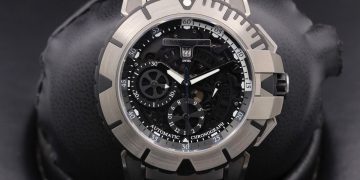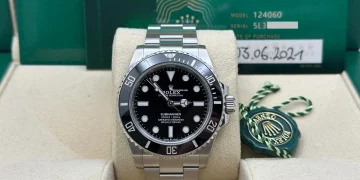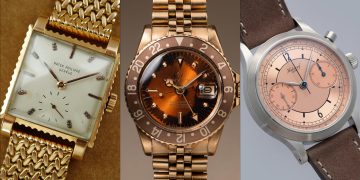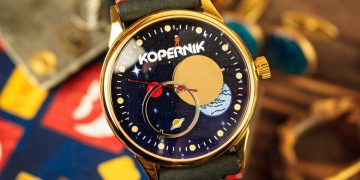Introduction:
In the world of luxury watches, brand history and heritage often carry as much weight as the craftsmanship and design of the timepiece itself. For many consumers, the allure of owning a prestigious watch goes beyond just its aesthetic appeal or functionality—it’s about connecting to the legacy and story behind the brand. Watches like Rolex, Patek Philippe, Audemars Piguet, and Omega are not just tools for telling time; they are symbols of craftsmanship, tradition, and history. But does this rich history truly add extra value for consumers, or is it merely a marketing tool to enhance brand prestige?
In this article, we will explore how the historical stories of classic watch brands shape their perceived value, how these stories influence consumer behavior, and whether they are integral in driving the success of iconic brands.
1. The Power of Heritage: Why History Matters
1.1 The Emotional Connection to Legacy
A key reason why consumers find value in the historical stories of watch brands is the emotional connection they create. Owning a watch with a deep-rooted history often feels like owning a piece of history itself. The sense of being part of something larger than oneself can provide a profound sense of pride and accomplishment.
- Brand Legacy as Status: Watches from iconic brands often embody more than just functionality. They are symbols of success, prestige, and taste. For many collectors, owning a Patek Philippe or a Rolex represents an acknowledgment of their appreciation for quality craftsmanship and a reflection of their status. This emotional value, linked to the brand’s heritage, adds an extra layer of worth to the timepiece.
- Embodying Tradition: The rich historical narratives attached to luxury watch brands often carry with them the notion of timelessness. Stories of Swiss watchmaking in the picturesque villages of the Jura Mountains, where the world’s most famous horological families have been crafting timepieces for centuries, serve as a reminder that these brands are steeped in tradition. These stories act as a testament to the enduring craftsmanship and dedication that have defined the brand for generations.
1.2 Heritage as a Form of Exclusivity
The history behind a luxury brand also plays a key role in the concept of exclusivity. The longer and more storied the brand’s history, the more exclusive it often feels. It becomes more than just a product—it becomes part of an elite legacy, accessible to only a select few who understand its value.
- Rolex is an exemplary case here. For decades, Rolex’s historical ties to explorers, athletes, and royalty have imbued its timepieces with a sense of prestige that enhances their perceived value. A Rolex Submariner, with its connection to underwater exploration and the rugged adventures of explorers like Jacques Cousteau, doesn’t just tell time; it tells the story of adventure and discovery.
- Similarly, Patek Philippe has long been associated with refined taste and luxury. The brand’s story of being passed down through generations and the fact that it is known for creating some of the world’s most complicated and exquisite watches contribute to the exclusivity factor that increases the watch’s allure.
2. Storytelling and Brand Marketing: Crafting the Narrative
2.1 How Brands Leverage Their History
Watchmakers often use their brand history as a central element of their marketing and branding strategies. The stories behind the brand’s creation, achievements, and milestones help to create a compelling narrative that appeals to consumers’ emotions and values.
- Iconic Models with Rich Histories: Brands like Omega and Tag Heuer capitalize on their historical achievements, such as Omega’s connection to space exploration with the Speedmaster, the first watch worn on the moon, and Tag Heuer’s ties to motorsport through the Monaco chronograph. These stories are central to the branding of these watches and contribute to their appeal, particularly to those who value innovation and adventure.
- Storytelling as a Marketing Tool: Classic watch brands often weave rich stories about the founders, innovations, and milestones that shaped the brand’s success. This kind of storytelling is not just a way to celebrate a brand’s history—it’s also a powerful marketing tool that strengthens the emotional bond between the consumer and the product.
2.2 The Impact of Limited Editions and Heritage Collections
Another effective way brands use their history to enhance perceived value is through limited editions and heritage collections. These watches often pay tribute to significant moments or iconic models from the brand’s past, and the limited availability makes them even more desirable.
- Limited-Edition Releases: Brands like Audemars Piguet and Patek Philippe often release limited-edition models that commemorate historic achievements or anniversaries. These limited runs create a sense of exclusivity, making consumers feel as though they are part of an elite group that owns a piece of history. The historical narrative behind these collections—whether it’s a celebration of a long-standing model or a tribute to an important event—adds immense value to the product.
- Heritage Collections: Some brands, like Longines and Jaeger-LeCoultre, have heritage collections that replicate or pay homage to designs from their past, often updated with modern movements or materials. This fusion of past and present appeals to consumers who are attracted to the nostalgia and history behind a classic design while also appreciating contemporary functionality.

3. Historical Stories as a Driver of Consumer Behavior
3.1 The Perception of Value
In luxury watchmaking, perceived value plays a crucial role in a consumer’s decision to purchase. The historical stories of a brand can significantly influence this perception. The more storied and prestigious the history, the more valuable the watch feels to the consumer. It’s not just about the price tag or material; it’s about what the watch represents in terms of craftsmanship, history, and legacy.
- Timeless Craftsmanship: Watches like the Patek Philippe Calatrava or the Audemars Piguet Royal Oak are often considered the epitome of luxury due to their rich histories and the association with perfection in craftsmanship. Consumers are willing to pay a premium for these timepieces because of the craftsmanship, the brand’s reputation, and the stories surrounding these iconic models.
3.2 The Influence on Long-Term Loyalty
For many consumers, the historical story behind a watch brand becomes a crucial factor in fostering brand loyalty. A connection to the heritage and tradition of a brand can lead to long-term attachment, with customers coming back to purchase subsequent pieces as they develop a deep appreciation for the brand’s legacy.
- Generational Loyalty: Watches are often passed down from generation to generation, and owning a timepiece from a brand with a rich history can become a family tradition. Brands like Patek Philippe and Vacheron Constantin have successfully cultivated a loyal customer base by positioning themselves as generational investments, with consumers viewing these watches as not just objects, but as heirlooms.
- Cultural Significance: For some buyers, the historical stories tied to a watch brand take on a deeper cultural meaning. For instance, owning a Rolex Daytona may be more than just about the watch itself—it represents a connection to the brand’s history in the world of motorsport and speed, appealing to those with a passion for racing or adventure.
4. Conclusion:
The historical stories behind classic watch brands undeniably add extra value to their timepieces. Beyond the mechanics and materials of a watch, it is the heritage and legacy of the brand that often elevates its worth in the eyes of consumers. These stories create an emotional connection, an attachment to tradition, and a sense of ownership in something that transcends time and fashion.
For many luxury watch consumers, the allure of owning a timepiece with a rich history is not just about purchasing a fine object—it’s about becoming part of a larger narrative of craftsmanship, prestige, and exclusivity. Whether through brand loyalty, emotional attachment, or the desire for status, the historical story of a watch brand undoubtedly plays a central role in driving consumer behavior and influencing purchasing decisions.
In the competitive world of luxury watches, the value of history is undeniable, and the classic stories behind iconic brands help to cement their place as timeless treasures in the watch industry.





































